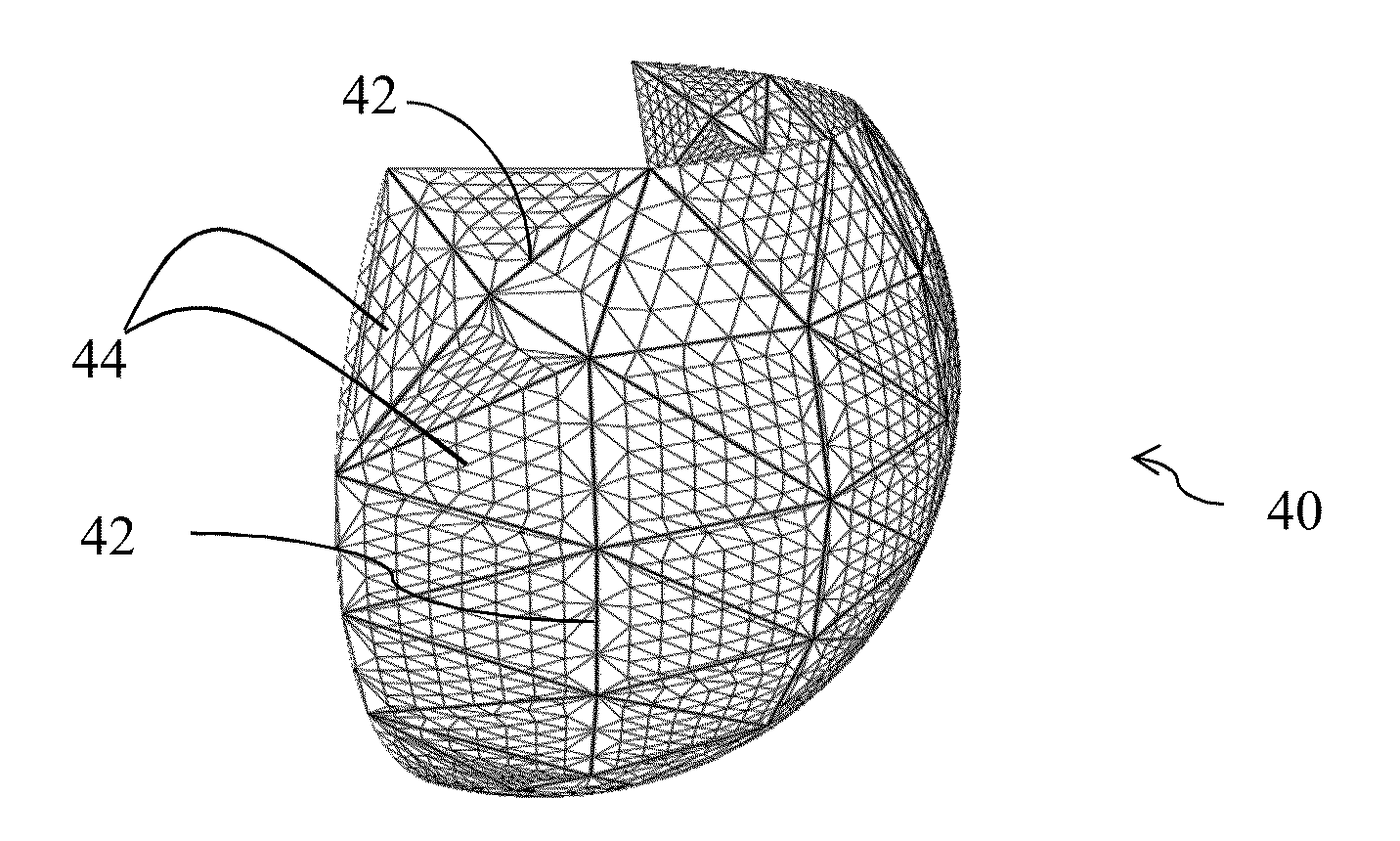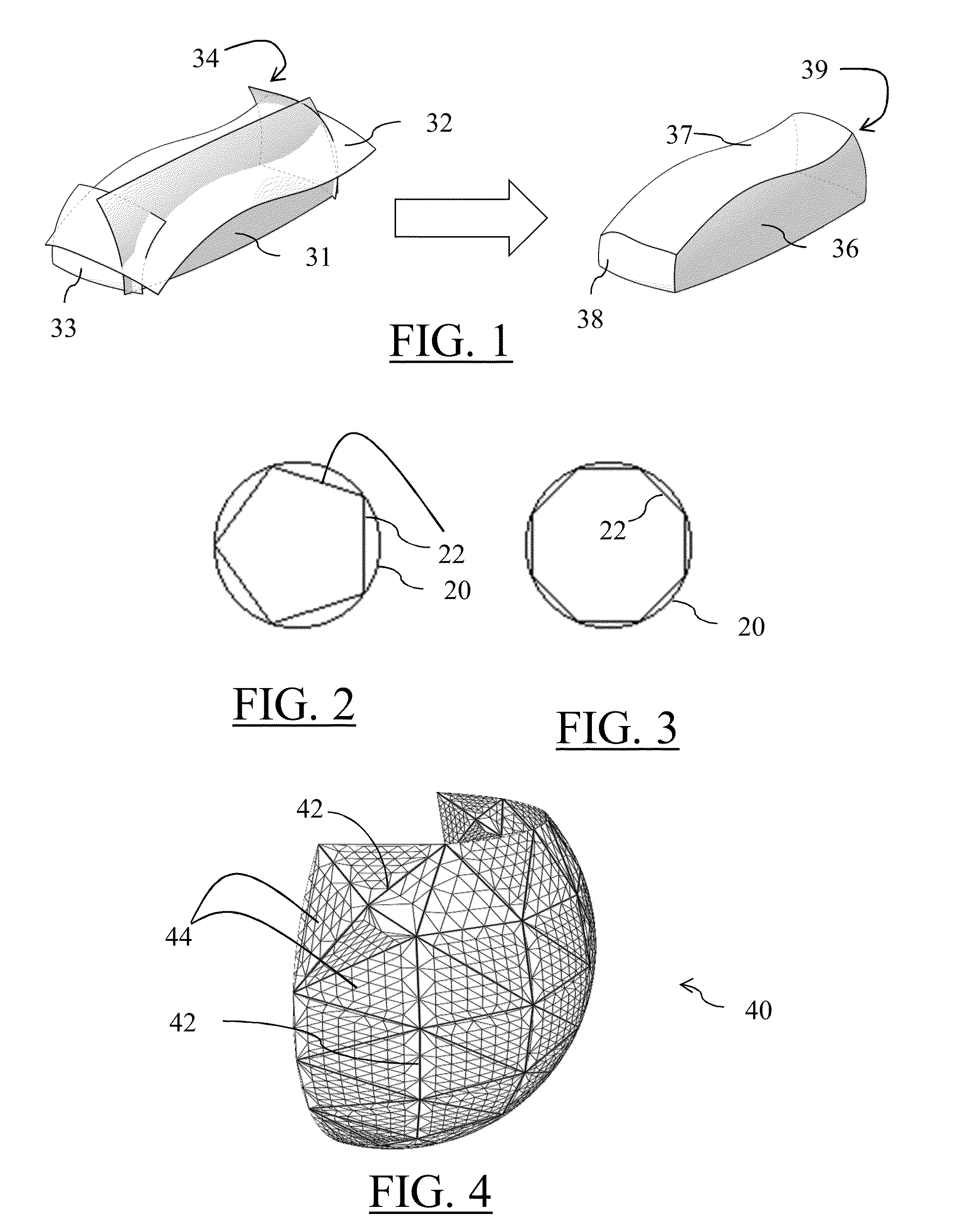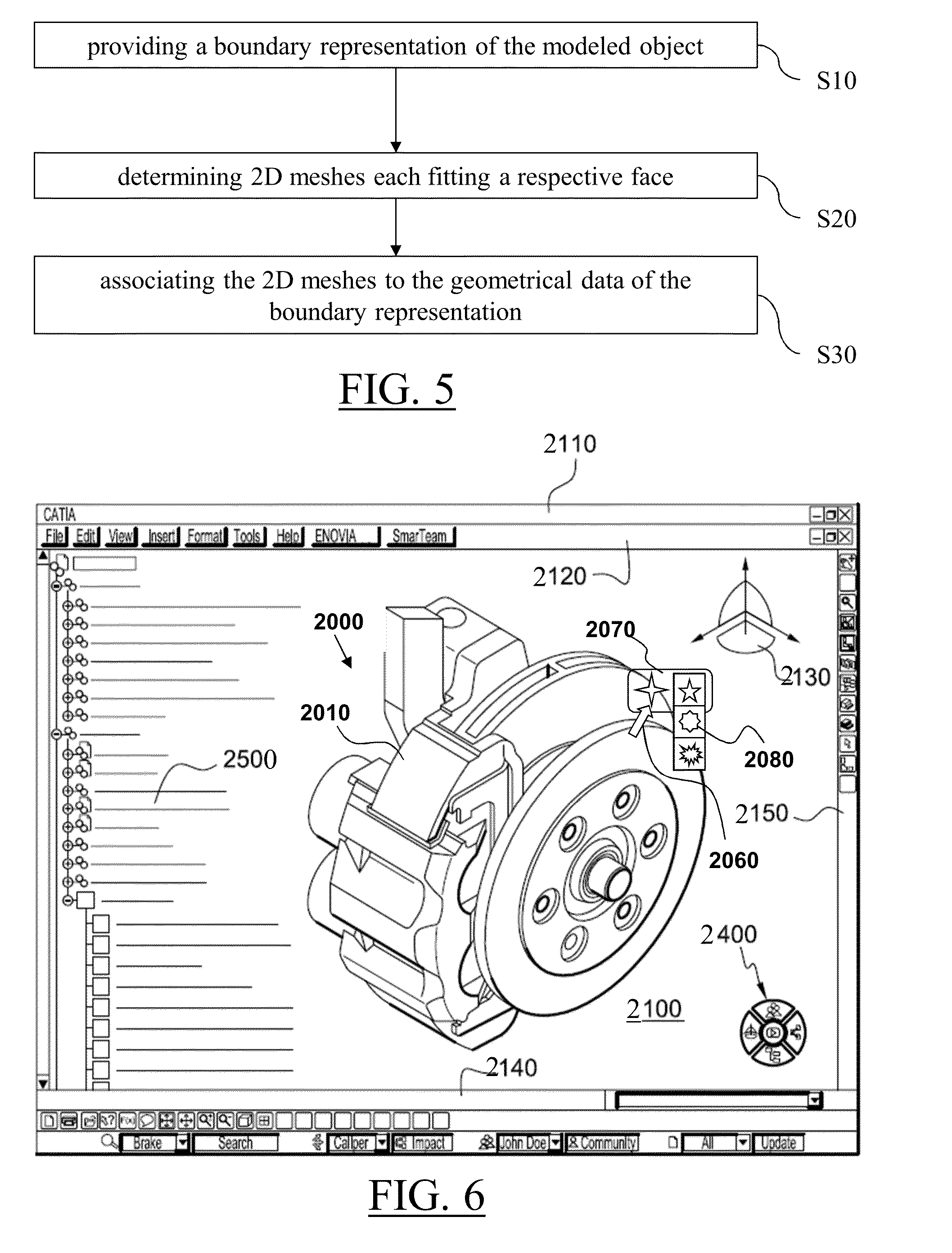Parameterizing a 3D modeled object for tessellation
a three-dimensional model and object technology, applied in the field of computer programs and systems, can solve the problems of large memory consumption, discretization problems, and the inability of the gpu to display the surface provided as a b-rep directly
- Summary
- Abstract
- Description
- Claims
- Application Information
AI Technical Summary
Benefits of technology
Problems solved by technology
Method used
Image
Examples
Embodiment Construction
[0053]FIG. 5 shows a flowchart of an example of the computer-implemented method for parameterizing a three-dimensional modeled object for tessellation. The method comprises the step of providing S10 a boundary representation of the modeled object. The boundary representation comprises both geometrical data and topological data. The geometric data include parametric surfaces. The topological data include a set of faces. Each face is defined as a portion of the 2D domain of a respective parametric surface. The method also comprises the step of determining S20 2D meshes each fitting a respective face. And the method also comprises the step of associating S30 the 2D meshes to the geometrical data of the boundary representation.
[0054]Such a method improves the tessellation of a 3D modeled object. The parameterizing of the modeled object before the tessellation allows a faster tessellation, relatively to the case that the tessellation is performed from the raw data constituting the bounda...
PUM
 Login to View More
Login to View More Abstract
Description
Claims
Application Information
 Login to View More
Login to View More - R&D
- Intellectual Property
- Life Sciences
- Materials
- Tech Scout
- Unparalleled Data Quality
- Higher Quality Content
- 60% Fewer Hallucinations
Browse by: Latest US Patents, China's latest patents, Technical Efficacy Thesaurus, Application Domain, Technology Topic, Popular Technical Reports.
© 2025 PatSnap. All rights reserved.Legal|Privacy policy|Modern Slavery Act Transparency Statement|Sitemap|About US| Contact US: help@patsnap.com



